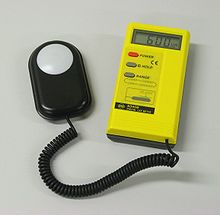In the pharmaceutical industry, it’s essential to have sufficient lux or light intensity for carrying out work accurately. If the work area lacks proper illumination, it can lead to issues such as eye strain and fatigue, especially during detailed work. Excessive lighting is also unnecessary, as it may result in glare and dazzle.

According to the Factory Act of 1948, Section 17, industries in India must adhere to specific illumination standards. Here are key points from the Factory Act regarding lighting:
- Ensure proper lighting in areas where employees work or pass through, using natural or artificial sources.
- Keep glazed windows and skylights in workrooms clean on both sides to meet safety requirements.
- Avoid glares from any light source or polished surfaces directly affecting employees.
- Eliminate shadows in factories to enhance visibility, preventing accidents or eye strain.
- State Government may set standards for adequate illumination in factories, workshops, or industrial processes.
Source: Maitri.mahaonline.gov.in
Factor affecting Lux or Light intensity in the area:
The following factors may cause low vision in the working area:
- Position of the source of light.
- Selection of tube lights or bulbs.
Guideline on the intensity of light in pharmaceuticals:
Ensuring proper lighting in industries is important for a safe and efficient working environment. The Indian Bureau of Standards has outlined guidelines for industrial lighting in India (IS 6665). These standards were initially introduced in IS:3646 (I – 1966), IS:3646 (II – 1966), and IS:3646 (III – 1968).
The illumination lux level standards were revised in 1972 and documented in IS:6665. Here are the recommended illumination lux levels for industrial buildings and processes, as per the updated standards.
RECOMMEND VALUES OF ILLUMINATION AND LIMITING VALUES:
Pharmaceutical and Fine Chemical Works:
| Area | Avg. Illumination (Lux) |
|---|---|
| Office | 300 to 500 |
| General Working area | 150 |
| Raw material storage | 200 |
| Control laboratories and testing | 300 |
| Pharmaceuticals manufacturing: grinding, granulating, mixing and drying, tableting, sterilizing and washing, preparation of solutions and filling, labeling, capping, cartoning and wrapping, inspection. | 300 |
| Fine chemical manufacture: i Plant processing ii Fine chemical finishing | 200 300 |
| Fine inspection | 700* |
| Color Printing (Inspection area) | 700* |
*Special attention should be paid to the color quality of the light.
In pharmaceuticals, an adjustable lamp holder fitted with a diffuser, such as 13 W fluorescent tubes approximately 52.5 CM in length, maintains a recommended light intensity of 300 to 500 Lux for visually inspecting parenteral preparations. For plastic and colored glass containers, it is advisable to keep the intensity of illumination at 2000 to 3750 Lux or higher.
Related Article: Stainless Steel Types
What are the means of Candle or Lux?
The intensity of illumination produced by a standard candle on the inside white surface of a sphere with a unit radius, when placed at its center, is the unit of illumination intensity. If the sphere’s radius is one meter, the illumination intensity is one lumen per square meter, known as a meter candle or Lux.
How to measure illumination intensity?
Lux Metre is used to measure the illumination of light, and an intensity meter is used to measure the intensity of UV radiation.
Criteria for measurement of light intensity:
Lux meter shall be used above one-meter height from ground level. For its measurement, select a minimum of five locations inside the room and calculate the average of readings taken to determine the intensity of room light. The light intensity is not to be less than 500 Lux for the production area and 300 for the Dispensing and sampling area.
CFR-211.44 states “Adequate lighting shall be provided in all areas”.
Frequency
The frequency of monitoring light intensity shall be once a year.

Naresh Bhakar is the Founder and Author at Pharmaguddu.com, bringing his extensive expertise in the field of pharmaceuticals to readers worldwide. He has experience in Pharma manufacturing and has worked with top Pharmaceuticals. He has rich knowledge and provides valuable insights and data through his articles and content on Pharmaguddu.com. For further inquiries or collaborations, please don’t hesitate to reach out via email at [email protected].

There is a very imported and use full information.
Is there any specific required by FDA on lux level in stability chambers.
This is very wide topic for discussion, but The stick answer is: at least 1.2 million lux-hours of visible light and 200 Watt Hr/m2 of UVA (near UV) light is required for exposure.